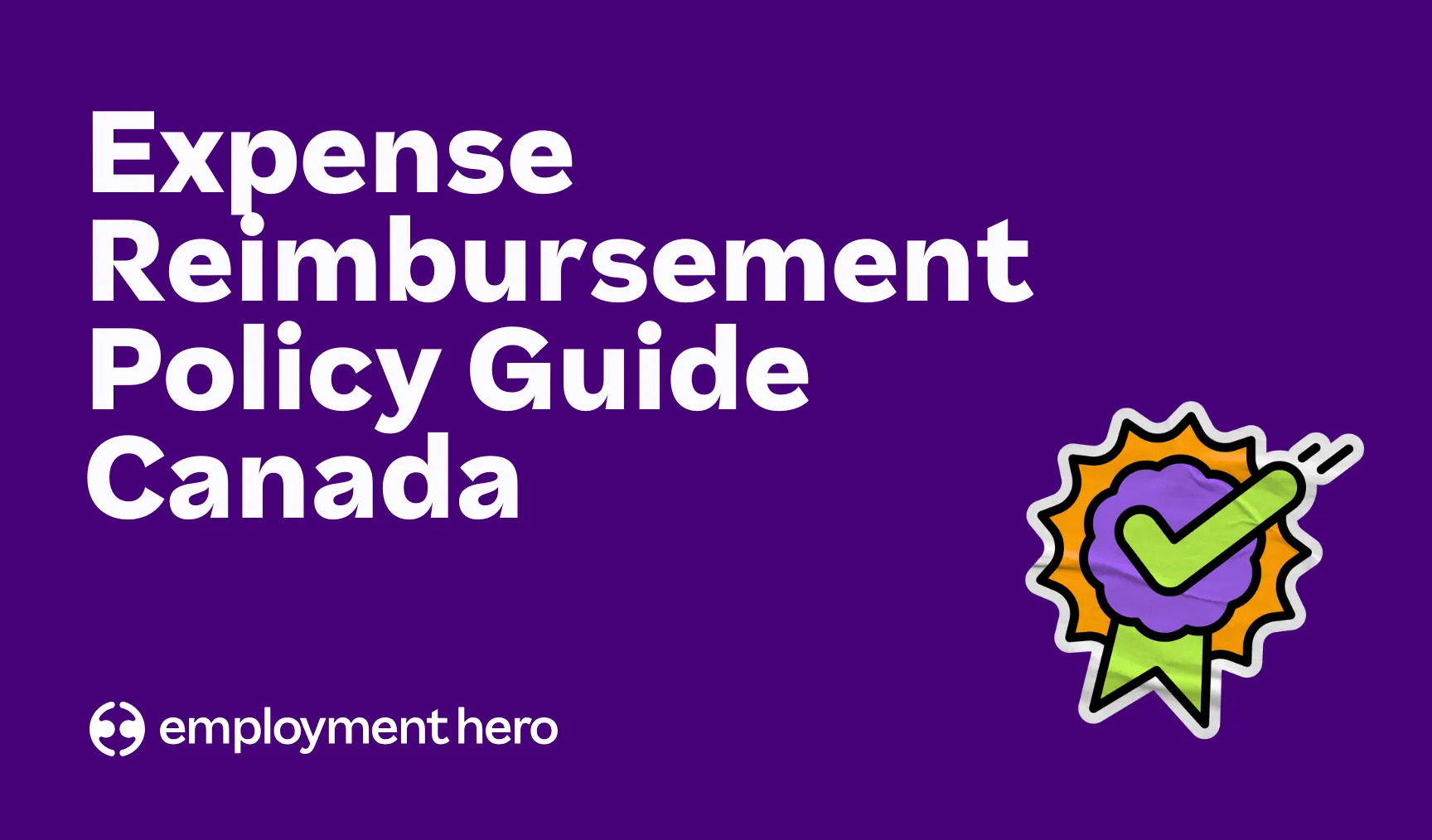Employee recognition programs in Canada: A complete guide for SMBs
Published
Employee recognition programs in Canada: A complete guide for SMBs
Published
Your team is your ultimate competitive advantage. In today’s dynamic talent landscape, retaining your top performers isn’t just a priority—it’s a powerful accelerator for growth. This guide is your definitive playbook for crafting an employee recognition program that truly delivers for Canadian small and medium-sized businesses (SMBs). We strip away the noise and bring you only the essential, impactful strategies.
What is in the guide?
Get ready for a clear, direct breakdown of recognition programs: what they are, why they are absolutely vital and how to build one without a massive budget. We’ll equip you with scalable frameworks, inspiring Canadian examples and practical ideas you can implement today. Plus, discover how to measure your return on investment (ROI). It’s time to stop wondering and start confidently building a culture of appreciation that drives exceptional results.
What are employee recognition programs?
At its core, an employee recognition program is a formal system for acknowledging your team’s hard work, achievements and contributions. But let’s be clear: this is more than just a “job well done” email or a gift card at the holidays. A true recognition program is a strategic tool that embeds appreciation into your company’s DNA. It’s about creating a culture where people feel seen, valued and motivated to bring their A-game every single day.
For SMBs, this isn’t a “nice-to-have.” It’s what sets you apart. You might not be able to match the salaries of a massive corporation, but you can build a workplace where people feel deeply connected to the mission and to each other. A structured approach to recognition demolishes ambiguity, ensures fairness and proves to your team that their efforts directly contribute to the company’s success. It transforms appreciation from a random act into a reliable, culture-defining habit.

Now that we’ve defined what these programs are, let’s explore the different shapes and sizes they can take.
Types of employee recognition programs
Recognition isn’t a one-size-fits-all game. The most effective strategies mix and match different approaches to create a program that feels authentic to your team and your business. Forget rigid rules; the goal is to find the right blend that energizes your people.
Here are the main types to consider:
- Formal vs. informal: Formal recognition includes structured awards like “Employee of the Month,” service anniversaries or performance-based bonuses. Informal recognition is more spontaneous—a shout-out in a team meeting, a handwritten thank-you note or a coffee on the boss after a tough week. You need both. Formal programs provide structure, while informal moments build daily morale.
- Peer-to-peer vs. manager-led: Manager-led recognition is the traditional top-down approach. It’s important, but it can’t be your only channel. Peer-to-peer programs empower teammates to recognize each other. This builds horizontal connections, surfaces wins that managers might miss and creates a powerful, collaborative culture.
- Monetary vs. non-monetary: Monetary rewards include bonuses, gift cards or pay raises. They are powerful motivators but can become expected. Non-monetary recognition is about acknowledging value through other means: public praise, extra time off, professional development opportunities or a better parking spot. Often, the most memorable recognition costs nothing at all.
- Digital vs. in-person: Digital platforms allow for instant recognition through a company-wide feed or app, which is perfect for remote or hybrid teams. In-person recognition, like a team lunch or an awards ceremony, creates a shared experience and powerful memories. A great program leverages both.
Employment Hero offers peer-to-peer shoutouts and a forum for public recognition – all within your end-to-end HR and payroll platform, so you can integrate it within your culture and everyday processes without adding to your team’s administrative workload.

Understanding these different types is one thing, but the real power comes from knowing the direct impact they can have on your business.
Benefits of employee recognition programs
Investing in recognition isn’t just about making people feel good; it’s a direct investment in your bottom line. When employees feel valued, they don’t just stay—they become active drivers of your success. Stop thinking of recognition as an expense and start seeing it as a powerful growth engine.
Here are the hard benefits you can expect:
- Sky-high retention: People don’t leave jobs; they leave managers and cultures that don’t value them. Recognition is a powerful retention magnet that makes your top performers want to stick around.
- Supercharged engagement: An engaged employee is one who brings discretionary effort to their work. Recognition is the fuel for that engagement, creating a team that is emotionally and psychologically committed to your goals.
- Increased productivity: Happy, appreciated teams work harder and smarter. When people see that their efforts are noticed, they are more motivated to innovate, collaborate and push for better results.
- A magnetic employer brand: A strong recognition culture turns your employees into your best recruiters. They’ll brag about your workplace to their networks, making it easier and cheaper to attract top talent.
- Reduced turnover costs: The cost of replacing an employee in Canada can be staggering—from recruitment fees to lost productivity. Recognition directly lowers turnover, saving you money that can be reinvested into growth.
With benefits this compelling, the question isn’t if you should implement a program, but how. Let’s break it down.
How to implement employee recognition programs
Launching a recognition program doesn’t need to be a bureaucratic nightmare. A clear, step-by-step approach ensures you build on solid ground for lasting success. Follow this framework to get it right from day one.
- Set clear objectives: What do you want to achieve? Is it lowering turnover by 10%? Increasing employee engagement scores? Start with the end in mind.
- Define your criteria: What specific behaviours and outcomes will be recognized? Align these with your company values. For example, if “collaboration” is a core value, create a specific award for it. This ensures recognition is meaningful and fair, not a popularity contest.
- Secure leadership buy-in: Your program will fail without support from the top. Show your leaders the data on ROI and retention. When they champion the program, everyone else will follow.
- Choose your tools: Will you use a dedicated recognition platform, a Slack channel or a physical “kudos” board in the office? Select tools that fit your team’s workflow and your budget.
- Train your managers: Managers are on the front lines of recognition. Train them on how to give meaningful, specific and timely feedback. Give them a budget and the autonomy to recognize their teams.
- Communicate widely and loudly: Launch your program with energy. Explain the “why,” the “what,” and the “how.” Keep the momentum going by celebrating winners publicly and sharing stories of great work.
Employment Hero empowers you to build a culture that prioritizes rewards and recognition by enabling peer-to-peer shoutouts that celebrates your employees for hitting goals and going the extra mile to make them feel seen, valued and supported.
Interested in exploring how you can transform your recognition program with Employment Hero?
Seeing how others have succeeded can provide the spark you need. Let’s look at some real-world examples.
Best employee recognition program examples
You don’t need to reinvent the wheel. Many Canadian SMBs are already nailing employee recognition. The best programs are authentic to the company’s culture and values. Take inspiration from these examples and adapt them to fit your own unique workplace.
Kryton International Inc. (Vancouver, Manufacturing/Distribution, 70 Employees)
Recognition focus: High-value, experiential and long-term retention
The Program: Kryton, a pioneer in crystalline concrete waterproofing, has consistently been named a top employer for its dedication to culture, which they famously state, “eats strategy for lunch every day.” Their program is a powerful mix of strategic sales incentives, tenure recognition and collective experiential rewards.
How it works (the mix):
- The big reward (experiential): A standing reward for achieving annual company targets is an all-expenses-paid trip to a Mexican resort for the entire company, reinforcing shared success.
- Sales Incentives (tiered monetary): They offer a tiered travel rewards system for employee annual sales achievements to drive individual performance:
- President’s Award: $2 million and above in sales receive a $1,500 travel voucher.
- Chairman’s Award: $4 million and above in sales receive a $3,000 travel voucher.
- Service awards (personalized milestones): To recognize tenure milestones, the company awards employees with a personalized video, a plaque and a gift (aimed to suit the recipient’s interests).
- Performance and development: Kryton uses a top-grading system that enables staff to maintain a clear understanding of where they are excelling and how they can improve, ensuring employees are primed for long-term success. As Human Resources Manager Marnie Perez notes, “People are the most important asset in any company. If you’re not able to engage, empower or even inspire your team, that is not authentic leadership.”
Centurion Asset Management Inc. (Toronto, Real Estate/Finance, 300 Employees)
Recognition focus: Values-based, growth-focused and frontline support
The program: Centurion, an asset management company focused on residential properties, won multiple “5-Star Rewards and Recognition” awards for its strategic approach to engagement, especially among its geographically distributed teams.
How it works (the mix):
- The “RISE” Award (values-based): This is a quarterly, peer-nominated award tied directly to the company’s core values (Respect, Integrity, Simplicity and Excellence). The winner receives a small monetary award and a public profile in the company newsletter, ensuring the recognition reinforces specific, desired behaviours across the organization.
- Learning Academy (non-monetary/incentivized): Centurion launched a Learning Academy with thousands of courses. Employees complete modules for points that can be redeemed for gift cards, effectively turning professional development into an engaging, gamified recognition tool.
- Frontline Support: They recognized the challenges faced by property staff during the pandemic by offering a $100 weekly wage top-up and a $500 monthly rental concession to employees who live and work in their properties—a powerful form of financial recognition tied to specific job challenges.
The impact: This multi-faceted program provides both structured growth (Learning Academy), values-based appreciation (RISE Award) and tangible financial support for frontline roles, driving high internal promotion rates.
Citadel Mortgages (Toronto, Financial Services, Under 100 Employees)
Recognition focus: Retention-driven, experiential and flexibility
The program: Citadel Mortgages achieved a 92% employee satisfaction rating by leveraging high-value rewards that strongly appeal to employees’ desire for work-life balance and unforgettable experiences.
How it works (the incentive):
- The vacation incentive (experiential): One of their best-performing incentives rewards employees with a fully paid, five-day, four-night vacation to one of 65 worldwide locations if they choose to return to working in the office. This is a creative, high-impact reward used strategically to encourage a return to the physical workplace and build camaraderie.
- Monthly spot rewards: They offer targeted experiential rewards for top performers, such as $500 hotel vouchers per quarter and monthly spa packages.
The Impact: By catering their rewards around creating experiences and giving employees valuable time off, they directly increase engagement and retention in a highly competitive, fast-paced industry.
These examples prove that effective recognition is often more about creativity and consistency than a big budget, a point especially crucial for small businesses.
Employee recognition programs for small businesses
As a small business, your agility is your superpower. You can create a recognition program that is deeply personal and impactful in ways that large corporations can’t. Don’t let a limited budget hold you back. Your biggest assets are creativity, communication and a genuine connection to your team.
Focus on starting simple. You don’t need an enterprise-level rewards platform on day one. Begin with one or two key initiatives, like a “kudos” board or a peer-to-peer nomination system run through email. The key is to be consistent. A simple program that is used regularly is far more effective than a complex one that gathers dust. Use your size to your advantage: the CEO can personally deliver thank-you notes or the whole company can celebrate a win together. That personal touch is something money can’t buy.

Indeed, some of the most powerful recognition methods are also the most affordable.
Cost-effective employee recognition programs
Thinking you need a huge budget for recognition is a myth. The most memorable rewards are often those that show you truly listen to and care about your employees’ well-being. Get creative and focus on what your team actually values.
Here are some powerful, low-cost ideas to get you started:
- The gift of time: Offer an extra day off, a floating holiday or a “get out of work early” pass. Time is a resource nobody can get more of, making it an incredibly valuable reward.
- Public praise (done right): A specific and sincere shout-out in a company-wide email or all-hands meeting can be more motivating than a gift card. Explain what the person did and why it mattered to the business.
- Learning and growth opportunities: Pay for an employee to attend a workshop, take an online course or get a certification. This shows you’re invested in their long-term career development, not just their short-term output.
- Flexible work perks: Offer the ability to work from home for a week or to switch to a more flexible schedule. This demonstrates trust and respects employees’ life outside of work.
Once your program is running, it’s critical to track whether it’s actually working.
Measuring employee recognition program success
If you can’t measure it, you can’t manage it. Tracking the success of your recognition program is essential for proving its value and making smart improvements over time. Don’t rely on gut feelings; use hard data to see what’s working and what’s not.
Focus on these key metrics:
- Employee satisfaction and engagement surveys: Add questions specifically about recognition. Do employees feel valued? Do they believe recognition is fair? A positive trend here is a clear sign of success.
- Retention and turnover rates: Track your voluntary turnover rate. If you see a decrease in turnover among recognized employees or across the company after launching your program, you have a direct link to ROI.
- Participation levels: How many people are using the program? Are nominations coming from across the business or just one or two departments? Low participation is a sign that you need to re-energize your communications or re-evaluate your rewards.
- Productivity indicators: While harder to link directly, look for correlations. Do recognized teams consistently hit their targets? Is there a lift in key performance indicators (KPIs) following the launch of your program?
Measuring success also helps you spot potential problems and sidestep common pitfalls.
Common mistakes to avoid in recognition programs
Even with the best intentions, recognition programs can fail. Being aware of the common mistakes is the first step to avoiding them. Steer clear of these traps to ensure your program remains effective and credible.
- The overemphasis on money: Relying solely on monetary rewards can make recognition feel transactional. It can also lead to jealousy and a sense of entitlement.
- Lack of inclusivity: If the same people are being recognized over and over, your program will be seen as a popularity contest. Ensure your criteria allow for a diverse range of contributions to be celebrated, from the quiet achievers to the sales superstars.
- Inconsistent recognition: If recognition is sporadic, it loses its power. Timeliness matters. Acknowledging great work a month after the fact feels like an afterthought.
- Failing to track ROI: If you don’t connect your program to business outcomes like retention and productivity, it will be seen as a “fluffy” HR initiative and will be the first thing on the chopping block when budgets get tight.
Ultimately, avoiding these mistakes and measuring success comes back to understanding the direct financial impact of a great program.
How recognition links to ROI and retention in Canadian SMEs
Let’s talk business. The link between recognition, ROI and retention is not a mystery; it’s a clear financial equation. The cost of employee turnover for an SMB in Canada is a business killer, estimated to be anywhere from 50% to 200% of an employee’s annual salary when you factor in recruitment costs, training and lost productivity.
A strong recognition program is one of the most effective tools you have to fight turnover. By investing a small fraction of what a replacement would cost into recognizing your current team, you can significantly boost retention.
Think about it: if your program prevents just one or two key employees from leaving per year, it has already paid for itself many times over. Add in the productivity gains from a more engaged and motivated workforce and the business case becomes undeniable. Recognition isn’t a cost centre; it’s a profit centre.
Build a culture, not just a program
You now have the framework, the ideas and the business case to build a powerful employee recognition program. The journey starts not with a massive budget, but with a genuine commitment to making your people feel seen and valued. Start small, be consistent and measure your impact.
By embedding recognition into your daily operations, you do more than just hand out rewards. You build a resilient, high-performing culture where your best people want to stay and grow. You create a magnetic employer brand that attracts top talent. You create a business that doesn’t just succeed—it soars. The conversation has started. Now, it’s time to build.
Ready to take action? Download this free guide and kick-start your journey to a thriving, motivated team.
To download the guide, we just need a few quick details.
Related Resources
-
 Read more: Expense Reimbursement Policy Guide Canada
Read more: Expense Reimbursement Policy Guide CanadaExpense Reimbursement Policy Guide Canada
Download a free expense reimbursement policy guide for Canadian businesses. Learn how to create a clear, compliant policy for managing…
-
 Read more: The professional development plan Canada’s top teams use
Read more: The professional development plan Canada’s top teams useThe professional development plan Canada’s top teams use
Download a free professional development plan template for Canadian businesses. Help employees set goals, track progress and achieve career growth.
-
 Read more: HR Managers: Don’t just survive the festive season, master it
Read more: HR Managers: Don’t just survive the festive season, master itHR Managers: Don’t just survive the festive season, master it
Make year-end easier: manage time-off, payroll, parties and shutdowns with confidence. Get practical tips for Canadian SMBs. Download the free…


















